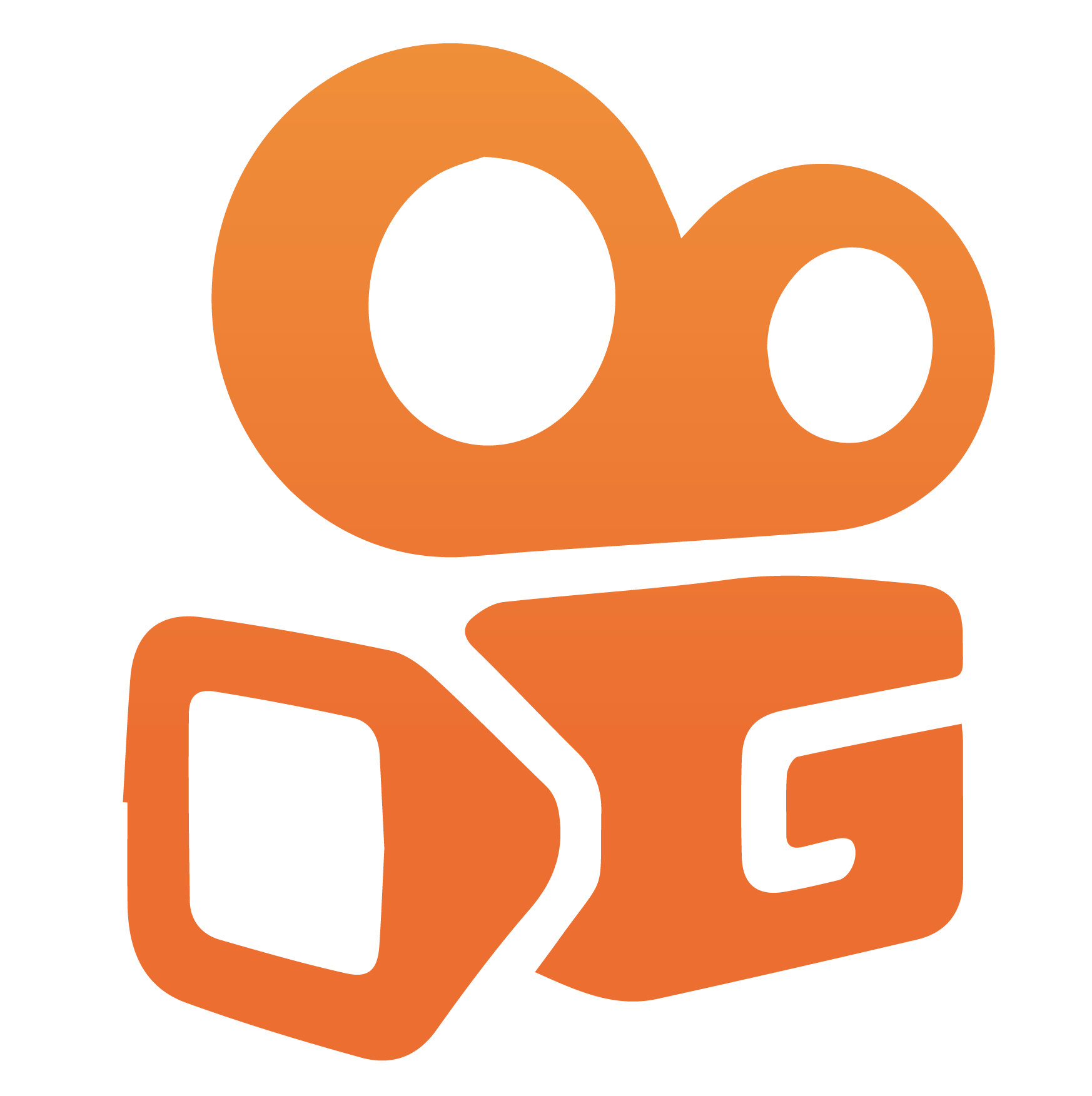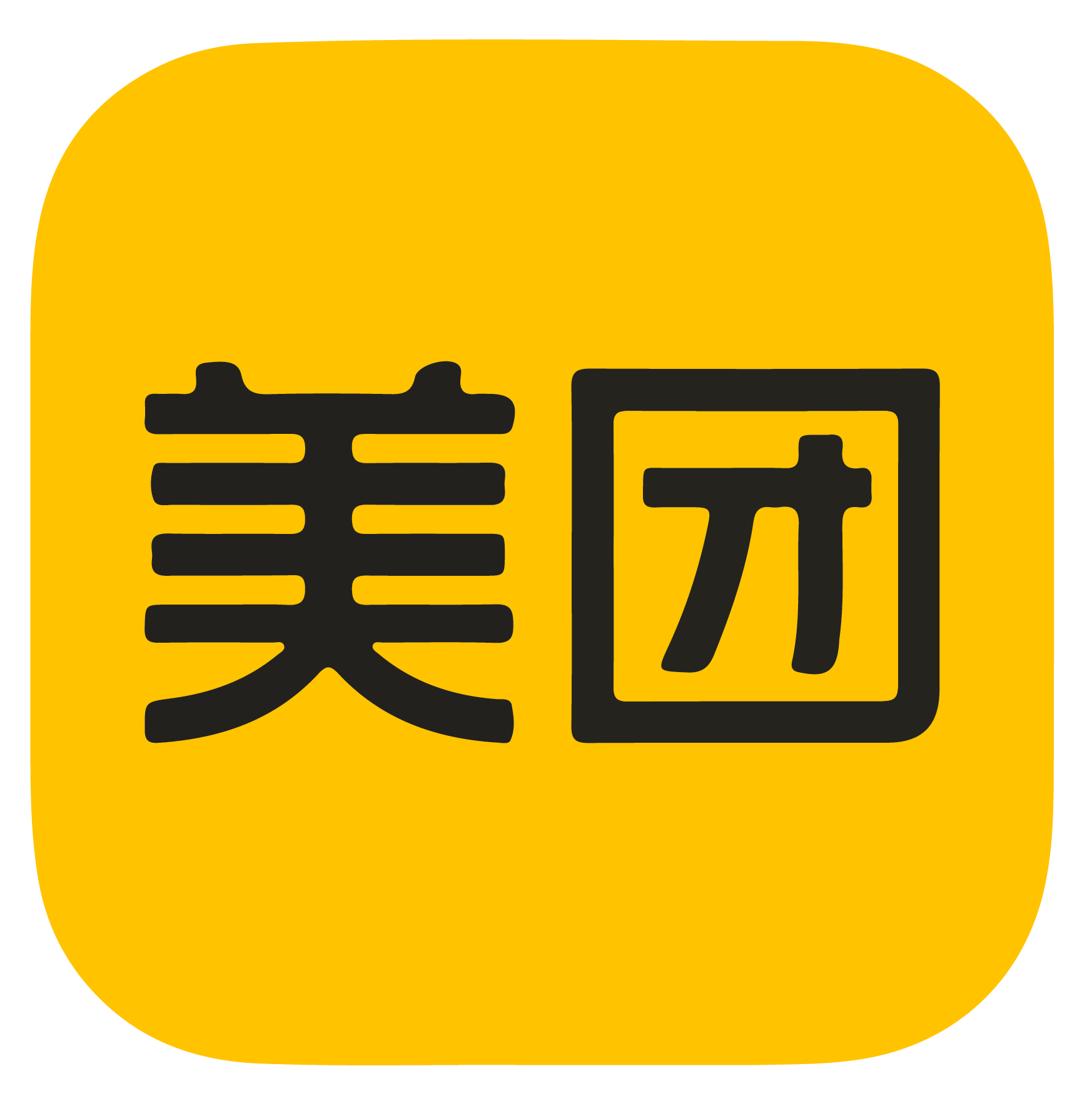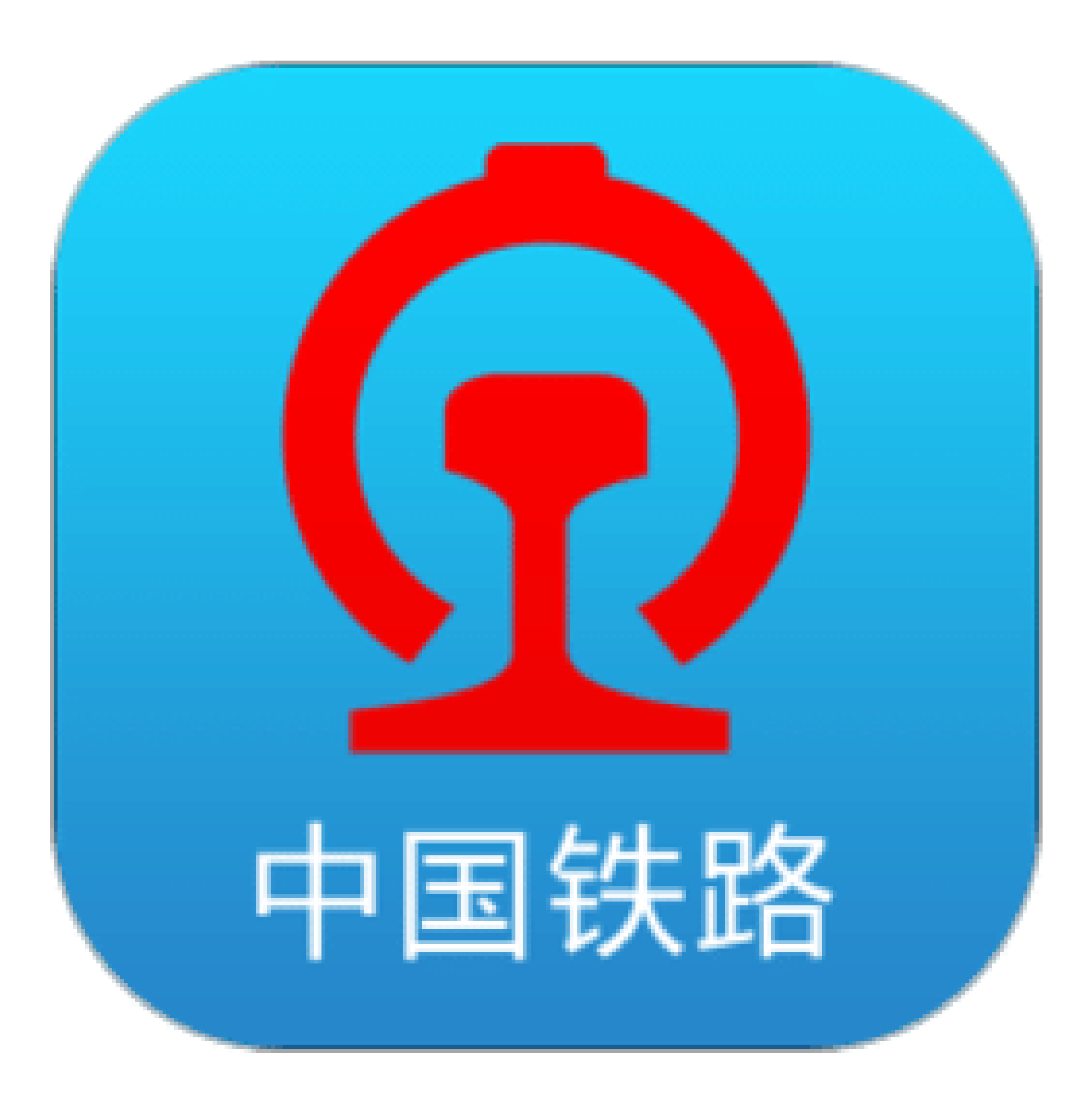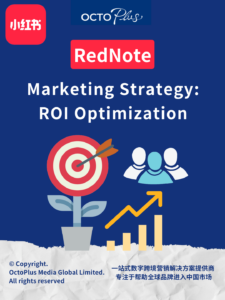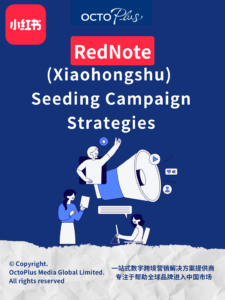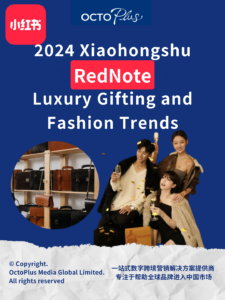China Marketing Insights Monthly Newsletter [October 2021]

Hello,
Welcome to our October Newsletter.
Tech crackdown is getting serious traction. We cover some of the major developments this month – LinkedIn scaling down in China, opening up of walled gardens, ban on cross-border transfer of data, approved news outlets & ban on private capital in news media, fines & ban on controversial ads.
In this issue, we look at several marketing ideas. First up is dynamic product placement in video content, “Video In” advertising uses AI to automatically identify the scenes that can be implanted with featured brand products after the video has been produced. Next, we look how content seeding can help brands increase awareness of their products in Q&A app Zhihu.
11.11 is just around the corner, if you have not built up your strategy yet we have you covered. Read about tips to get incremental sales during this shopping festival season.
We wrap up this newsletter with App of the month – iQiyi – China’s largest video streaming site.
Sincerely,
Mia C. Chen
CEO & Co-Founder of OctoPlus Media



CHINA TECH CRACKDOWN – OCTOBER UPDATE
We continue our coverage on the great tech crackdown in China. If you have missed our previous coverage, read more about the Anti-monopoly crackdown, PIPL, Advertising law updates.
Chinese authorities say progress is being made in their efforts to clean up the irregularities created by privately run tech giants and that “there will be more substantial progress by the end of this year”. Many point to this as a sign that the crackdown might end soon. But on the other hand, the head of China’s Ministry of Industry and Information Technology (MIIT) said scrutiny of the internet sector will deepen, the agency only halfway through its six-month campaign to fix problems with the digital economy.
We round up some of the key developments over the past month.
- LinkedIn Linking Out –
One of the biggest news for western companies is the news that LinkedIn is shutting down its social network in China. This is to comply with the latest internet laws, censorship and increasing challenges in operating environment and greater compliance requirements. LinkedIn was the last major U.S social network still operating in China – Google, Facebook, Twitter all have been blocked for more than a decade.
While LinkedIn is not completely shutting down in China – it will operate a job portal – this will be a shell of its formal self with no functionality to comment, post or share information.
If you are an advertiser previously running ads on LinkedIn China, your options now are limited to MaiMai – a Chinese version of LinkedIn.
- Walled gardens – no more?
MIIT has been giving guidance to internet companies as they conduct self-rectification measures to unblock external website links. China’s internet industry has historically been characterized by “walled gardens”, where major companies built barriers around their ecosystems, blocking links to the services of rivals. Tencent’s WeChat has in the past banned some external links to competitors including e-commerce giants Alibaba and ByteDance. ByteDance, for example, blocks links to WeChat as well as the live-streaming channels of JD.com.
Afte the MIIT ordered “self rectification” measures to unblock external links, Tencent said it supported the decision and would “make the necessary changes in phases”. Alibaba said it will “fully comply” with the new mandate, and ByteDance said it will not delay implementation.
Cracks have started to appear –
- WeChat started to allow links to its rivals to be shared in one-to-one chats
- Alibaba plans to launch bargain online shopping platform Taobao Deals as a mini-program on WeChat – although it has hit a snag after WeChat suspended the trials, they are working towards a resolution
- Alipay, WeChat Pay open up payments ecosystems to UnionPay
- Ban on cross-border transfer of data –
MIIT has drawn up new regulations that will prevent industrial & telecommunications data from leaving the country. The public can provide feedback on the draft by end of October.
All businesses that handle industrial and telecoms data in China are required to categorize such information into “ordinary”, “important” and “core”, and report their data catalog to the MIIT’s local branches.
As with many laws, the categories are subjective and undefined yet.
- Approved news outlets & ban on private capital in news media –
China’s internet watchdog has published a new list of government-approved news outlets, giving the nation’s internet platforms an exhaustive directory of sources they are allowed to republish. The list is nearly 4 times longer than the previously published version (2016), consists of 1,358 sources.
In related news, China has reiterated its ban on Private enterprise in news organizations. The document specifies that non-public capital, generally considered capital unrelated to the government or state-owned companies, “shall not invest in, set up or operate news agencies, newspapers, publishers, or radio or television stations”. While the original ban has been in place since 2005, it has been selectively enforced.
The document specifies that private capital cannot be used for live broadcasting of key events, including content related to politics, economics, the military, diplomacy, and culture, along with any other events that can affect public opinions. The same rule applies to running certain pages, channels, columns, programs, or social media accounts of accredited news organizations.
Fines & ban on controversial ads –
Two of China’s largest short video-sharing apps – Douyin & Kuaishou have been fined 200,000 Yuan by regulators for publishing controversial mico loan ads that encouraged “excessive consumption”. Regulators described the behavior of the two app operators as having “serious value problems that preached incorrect orientation, such as excessive consumption”. This reflects Beijing’s effort to strengthen governance of the country’s cyberspace, bringing ideology, culture, moral standards, and online behavior under control.
Still confused? Too many laws & regulations to follow & keep track of? Do not fret, we are here to help. We keep track & ensure all our client’s digital campaigns are compliant in China. Get in touch if you need assistance.

11.11 SHOPPING - TIPS FOR SUCCESS
It’s been more than ten years since the first Double Eleven Shopping Festival. It has become one of the most important marketing activities of major e-commerce platforms. As the years have passed, with more insights, the strategy needs to be adjusted and changed.
Different from the early days of its inception, with the increasing scale of the Double Eleven Shopping Festival, now it is no longer just a one-day event on November 11. The major platforms have stretched their battle lines from pre-heating activities to discounts and promotions have been ready since October. And each platform has its own strengths to create brand characteristics. The changes in consumer spending habits have also caused merchants to adjust their 11.11 strategy accordingly.
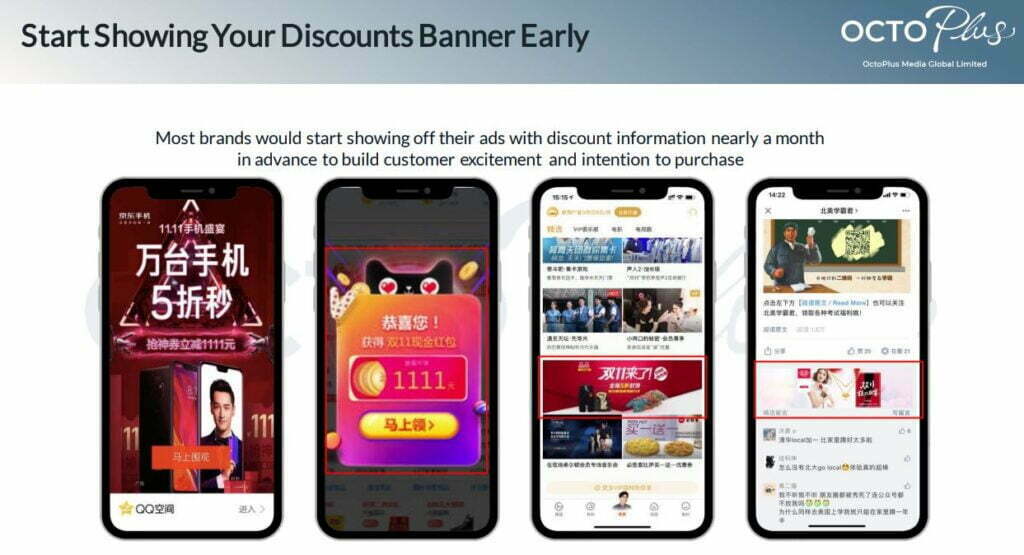
Focus on short-form video platforms –
The mode of short video + live broadcast + social media is now the standard configuration for the operation of e-commerce shopping festivals of various brands. Through observation, it is not difficult to find that many of today’s live broadcasts will invite KOLs or related celebrity spokespersons in a certain field to participate in the live broadcast, which is also more conducive to the brand strengthening the brand image and attracting more consumers’ attention. The celebrity anchors match the personality and create an exponential effect for the brands.
In addition, Tencent in 2020 has also injected new impetus into this shopping spree. WeChat video account and mini-program live broadcasts have provided brands with new channels for promotion and delivery.
Content is (still) king –
Live streaming and short videos have become the main links of the shopping festival, and the characteristics of the platform make merchants no longer purely sell goods. The survey shows that users’ consumption habits on e-commerce platforms have changed from actively searching for products in the past to now buying while playing and shopping through content consumption. Therefore, e-commerce content has become an inevitable trend. E-commerce shopping platforms will use games or social sharing methods during the shopping festival to increase the interactive content of users, expand the promotional effect of the event, and increase the browsing time of users on the platform to enhance user stickiness.
The contentification of e-commerce has turned the shopping festival into a large-scale entertainment festival. Tmall’s Double Eleven party is a typical example of combining entertainment with shopping. Variety of live streaming with goods is the general trend, increasing game interaction, upgrading the format, short videos and long videos linking the IP of the product, using stars and evening parties, etc. to transform the original single event content of the shopping festival into a richer entertainment event.
In addition to e-commerce content, content e-commerce is also a development direction in recent years. A short video platform with a huge number of daily active users can carry related products in areas that users are interested in. The better the brand and the content, the better the publicity effect. Xiaohongshu, Weibo, Kuaishou, and Douyin can all put Taobao links to realize the jump from the content platform to the e-commerce platform.
Omni-channel linkage –
As mentioned earlier, the duration of the Double Eleven event is gradually lengthening, which also allows platforms and brands to have a longer time to promote momentum through various media platforms in advance. Reach more consumers through online and offline linkages. Offline entertainment and catering are also added to the double eleven events, online multi-platform social communication, using celebrity KOLs to warm up the event, and continuous exposure to keep the event engaged.
In 2020, all platforms had started warm-up activities basically on October 21. Take the star anchor Li Jiaqi as an example, through social platforms such as Weibo and official accounts, to promote the topic of the shopping festival, use public domain plus private domain fan operations for publicity, short video platform can display richer content, in addition to planting ideas. In addition to attracting traffic, you can also preview the live broadcast. Eventually, during the shopping festival, the live broadcast and discounts brought a huge transaction volume to the brand. Utilizing the different advantages of omnichannel platforms is the key content of the Double Eleven brand strategy.
On Double Eleven in 2020, from November 1 to November 11 at 00:30, Taobao and Tmall’s turnover exceeded 372.3 billion yuan. In the opening 11 minutes, the total turnover of 100 brands exceeded 100 million. This year, each platform will make its own unique tricks. Whether the transaction volume can reach a new high, we will wait and see.
Want to run a Double Eleven marketing campaign for your brand? Contact us for exclusive advertising strategies.
DRIVING HIGH-QUALITY TRAFFIC THROUGH ZHIHU
As the largest knowledge content platform on the Internet in China, Zhihu has as many as 75 million monthly active users, and its users are characterized by high education, high income, and high consumption. These users have a high degree of acceptance of new products and new services and are more willing to try and experience new things. These users with various interests are the high-quality target audiences of most Internet products and potential users of most brands. This is also the fundamental reason why more and more brands choose to advertise on Zhihu.
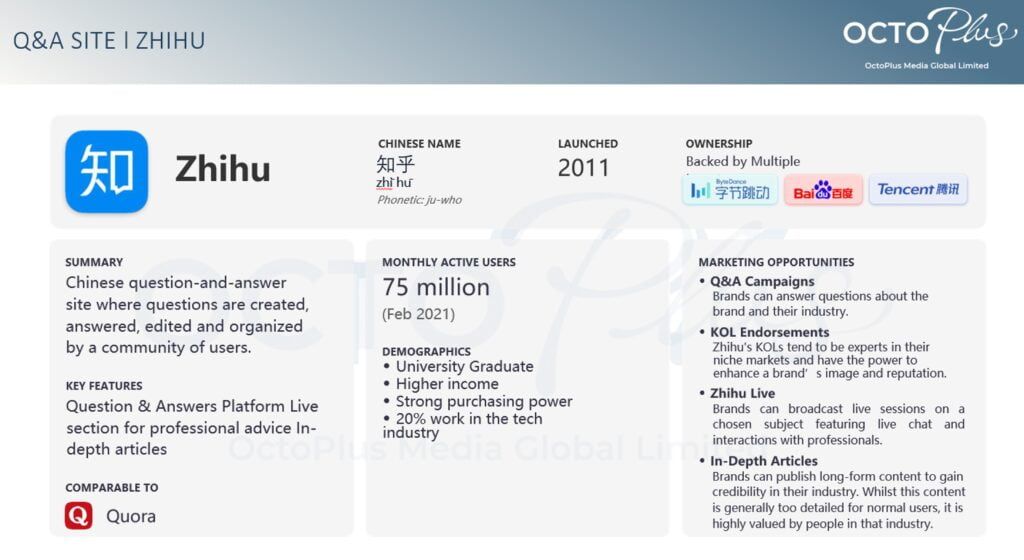
Internet users’ knowledge and sources of information range from simple searches to detailed explanations on Zhihu. The high-quality content has continuously enhanced users’ trust, and Zhihu’s brand value and influence have also been highlighted. When you are still looking for answers to your questions on Baidu, but you are constantly attracted by Zhihu titles, you jump to the Zhihu platform. Users can also be known to recommend brands & products, search for relevant information before buying, and share it after shopping, which further affects the entire chain of consumer decision-making.
Zhihu’s influence on user behavior is everywhere. On Zhihu, there are both professional and in-depth questions and answers, as well as humorous and down-to-earth responses. For new consumer brands, Zhihu is one of the choices when brands want to start building brand awareness and creating a more three-dimensional brand image.
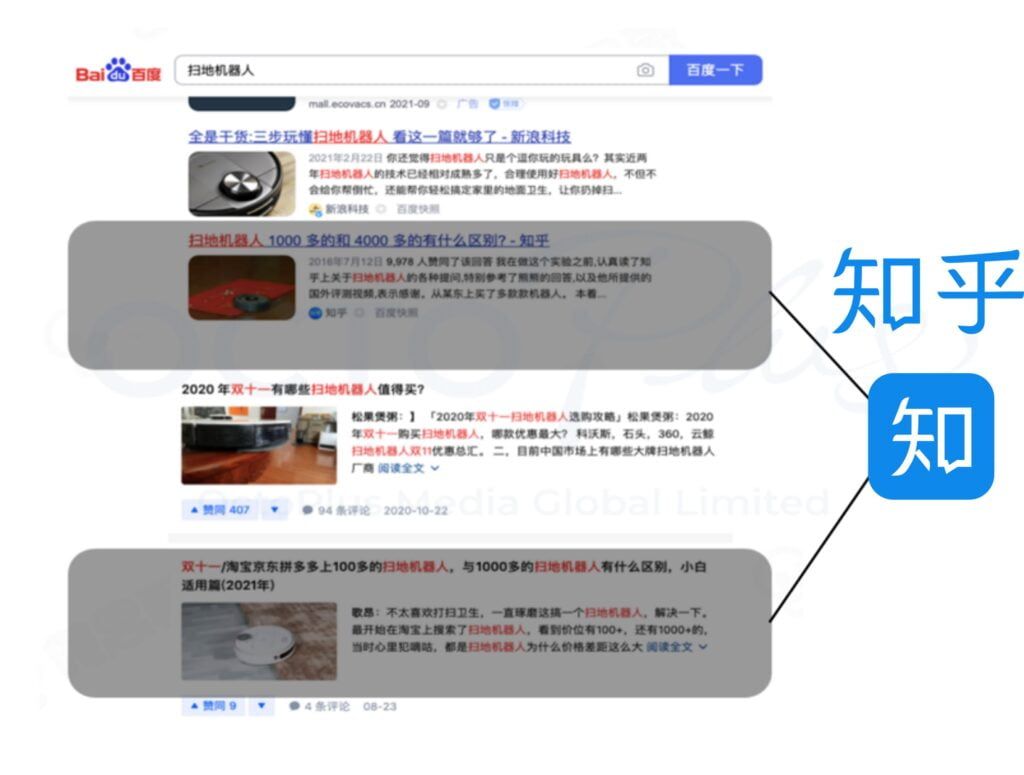
Zhihu SEO can be perfectly combined with Baidu into Content SEO, and the traffic is also very high. It can be seen that Zhihu is still a highly weighted media platform on the Internet.
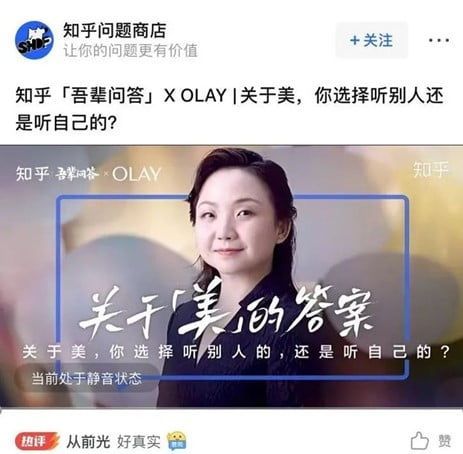
More and more brands, such as OLAY, Audi, NIO, Huawei, Xiaomi, Keep, etc., began to have close dialogues with users on Zhihu, accepting compliments while also accepting well-intentioned criticisms. In this way, brands have created a sense of participation.
Zhihu also has other forms of advertising: such as screen opening, native ads and other forms. Distributed amount massive amounts of user behaviour data intelligently through AI technology to provide more powerful product solutions. Rich advertising styles, precise search scenarios, and tools to enable timely conversion are favoured by more and more customers.
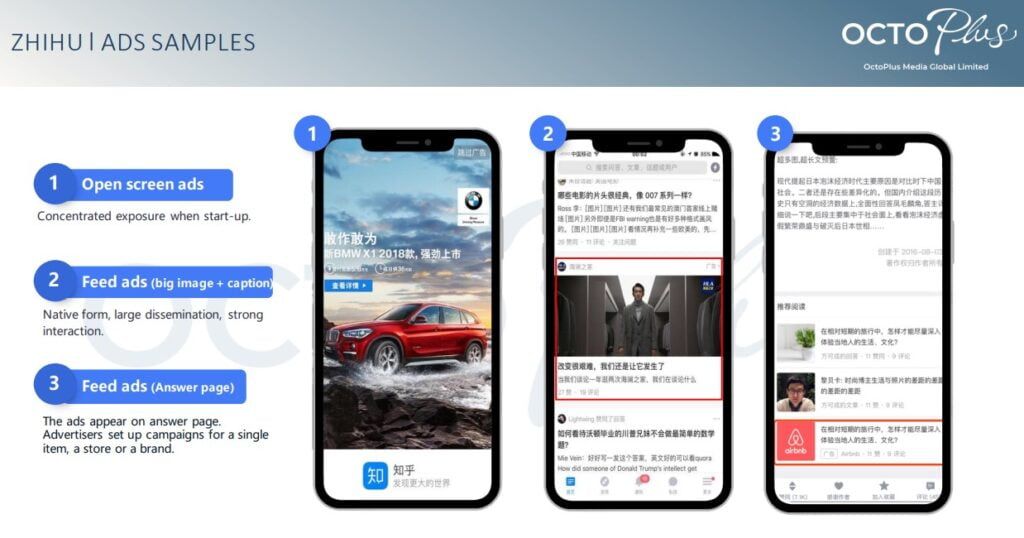
To use Zhihu as an analogy, every description, every picture, every comment in the answer is just like the facade, product and environment (content pool) of the brand store. Therefore, the brand should carefully polish each content and constantly monitor the content that is being browsed and seen, all these planting transformations have made Zhihu’s content value more prominent.
Industries suitable for advertising and promotion in Zhihu include education, e-commerce, service, tourism, etc. If you are interested in Zhihu advertising, please contact us!
NEW MARKETING IDEAS - VIDEO IN ADVERTISING
Video in advertising is a form of embedded advertising in which brand creativity can be automatically matched to the scene in the video.

Source: From iQiyi & Miaozhen Pan-Media Industry Research – Video in广告应用探索指南
Brand advertising can use AI technology to automatically identify the scenes that can be implanted in the video that has been filmed, and after post-processing, the brand ideas can be implanted into the specific scenes. The display area, duration and location of the brand creativity can be automatically adapted to specific scenes and displayed in the video without obstruction to ensure natural brand creativity.
Key Features:
Post-placement ads
Automatically recognize scenes and form adjustments
Batch identification and large-scale implantation
Support agile optimization
Ensure the quantitative effect through scientific design and real material measurement
Third-party agencies can use advertising monitoring technology to complete implanted advertising monitoring, gather the effects of exposure and other effects, and perform a combined evaluation with other advertising forms
The new consumer brand marketing model breaks the mass production followed by mature brands. The Miaozhen marketing team analyzed and observed more than 200 new consumer brands, and finally ended three key stages: the initial stage, the development stage, and the growth stage.
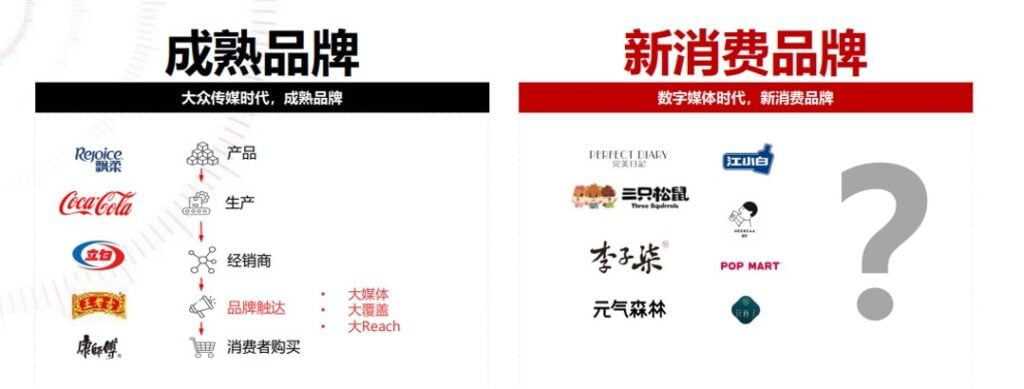
Source: From iQiyi & Miaozhen Pan-Media Industry Research – Video in广告应用探索指南
In the initial stage, the goal of the brand is to survive, and the marketing strategy is mainly to promote, such as content seeding, drainage of public domains and conversion of private domains.
In the development period, the goal of the brand is to become popular. There are multiple forms of promotion strategies, such as “video streaming” to bring goods, using more marketing touchpoints, and linking up.
From the period of development to growth, the short-term survival of the brand is no longer a problem. The problem is how to maintain sustained growth. Brands have begun to establish cultural barriers in their marketing strategies to increase public domain penetration.
Current Challenges for brand advertising:
The mobile phone penetration rate is 99.7%, and there is no more room for growth.
The expansion of the membership scale has led to a reduction in the inventory of advertisements for members. As the mainstream traffic of advertising brands, the share of traffic in video media (not including short video) advertising has fallen.
Online video is still one of the cores of Chinese market traffic.
In 2021, most advertisers will focus on content marketing investment, with drama series being the focus of the investment.
Classic content + innovative themes keep China’s online video drama synthesis market alive, and innovative IPs continue to incubate.
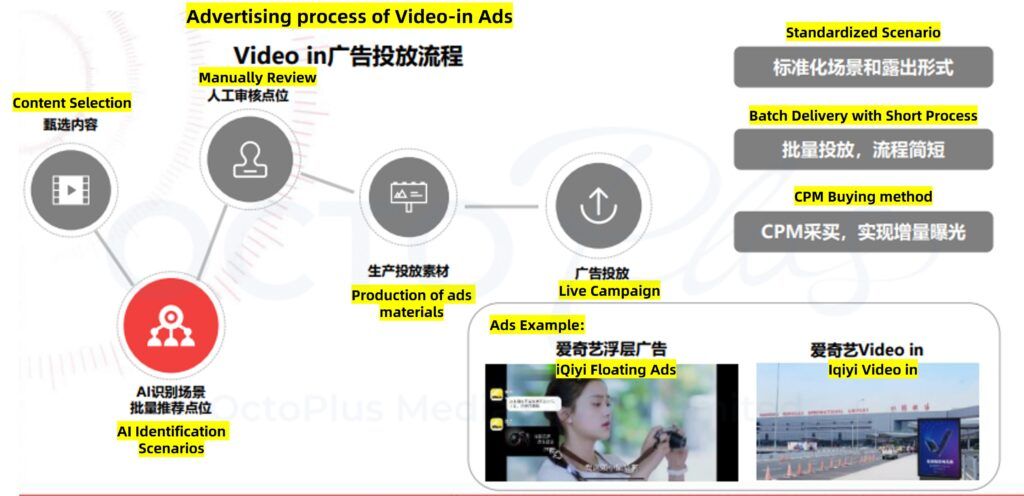
Source: From iQiyi & Miaozhen Pan-Media Industry Research – Video in广告应用探索指南
Value of Video in advertising:
The placement of advertisements in episodes can fill in the member traffic that cannot be reached by other means, and achieve Incremental Reach;
Video In advertising and its scientific strategy break the marketing strategy restrictions brought by traditional placement advertising (difficult to do agile optimization, difficult to quantify results, and difficult to calculate total reach)
Implementation: AI enables Video In ads to achieve creative standardized batch delivery
Cooperate with the media to quantify and implant visible effects
A third-party agency like Miaozhen can realize batch detection of Video In ads
Video In advertising can help brands achieve new traffic exposure, stand out in a saturated market, break the traditional implant advertising model and its limitations, achieve various adjustments, and obtain more efficient marketing activities for advertisers.
To know more about Video In ads & how our partner Miaozhen can help track, talk to us!

APP OF THE MONTH - IQIYI
IQiyi is China’s largest online video streaming website. It was established in Beijing in 2010. It is known as “China Netflix”. IQiyi owns massive, high-quality, high-definition online videos, and is a professional online video playback platform. The content of video resources in iQiyi is rich and varied, covering movies, TV series, animation, variety shows and live content.
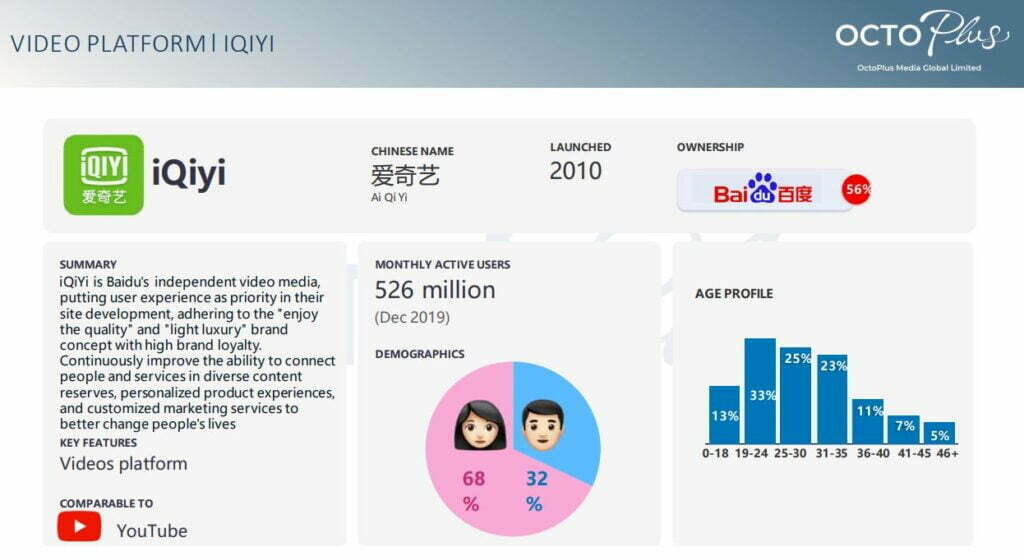
Platform Statistics:
By 2019, iQiyi has more than 520 million monthly active users.
The proportion of women is 68%; men make up 32%.
Most of the user age groups come from the 80s and 90s, among which the 19-24 age group accounts for the largest proportion, accounting for 33%.
By 2020, the number of subscribers to iQiyi has exceeded 100 million.
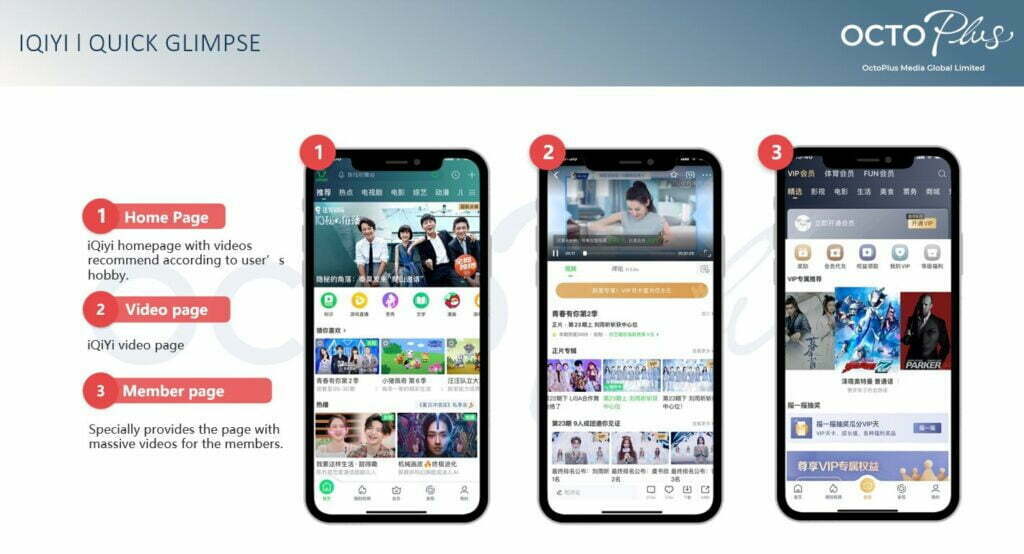
IQiyi advertisements include open-screen advertisements, pre-roll videos, and feed advertisements.
1. Open Screen Ads
Open-screen advertising is the first entry point for iQiyi to start up. When users open the iQiyi app, they display brand information on the phone screen as soon as possible to meet brand exposure needs, with strong visual impact, and quickly attract users’ attention.
Open-screen advertising is very suitable for new product launches, event promotions and other activities that require a lot of exposure.
Dynamic and static display modes, users can click to jump to the landing page, providing advertisers with multiple choices.
Flexible and precise operation mode, flexibly adjust the delivery area and scope according to different needs
Bidding mode: CPD
2. Pre-roll Video
The pre-roll video is generally displayed before the video content is played. This is usually non-skippable and generates high engagement
Suitable for brand awareness, as non-skippable and high attention period before the video content starts
Multi-dimensional targeting function to ensure the right audience
Rich & colorful way convey information
Bidding mode: CPM
3. Feed Ads
- Social Ads – covering socially active user groups, with distinctive tags and easy precise division. Users can comment, which helps advertisers collect feedback in time.
Bidding mode: native graphics: CPM/CPC; native video: CPV
- Native Ads – a new video information delivery platform, with advertisements interspersed between the contents of the channels of “iqiyi information platform-iqiyi headlines”, which can integrate different users and increase user attributes, and use the same format as the original content of iqiyi headlines.
Bidding mode: CPM/CPC
- Channel page Ads – “Kylin Mathematical-iQiyi Effect Promotion Platform” – Channel information flow advertisements are interspersed among the original content of iQiyi, mainly displayed in the five major channels of recommendation, TV series, movies, animation, variety shows and various local station channels, covering mainstream movie viewers, high user attention, covering most regions of the country.
Bidding mode: CPM/CPC
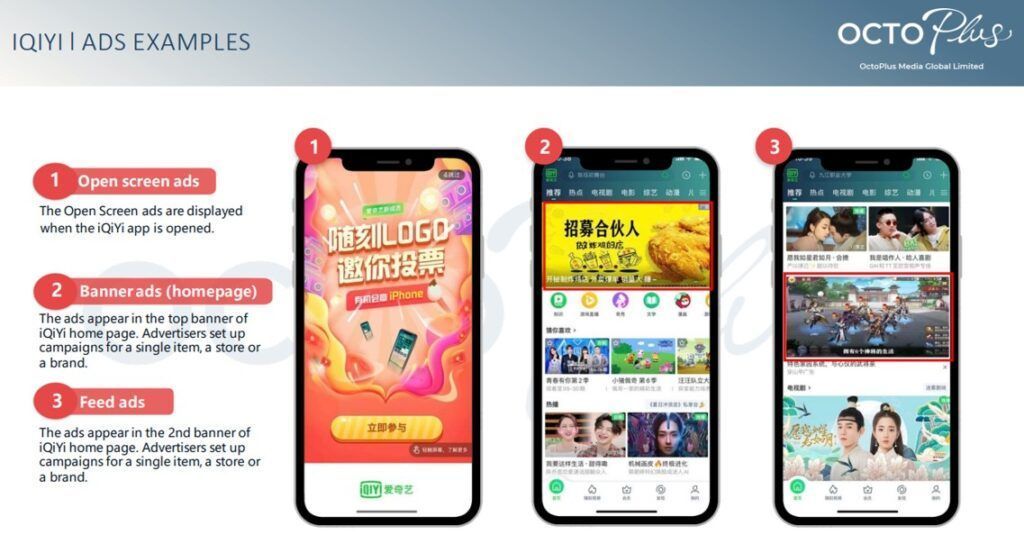
-End of the Newsletter-
Feel free to talk to us
It’s a team with one single shared goal, which is our client’s success. Deliver results for your business now.















